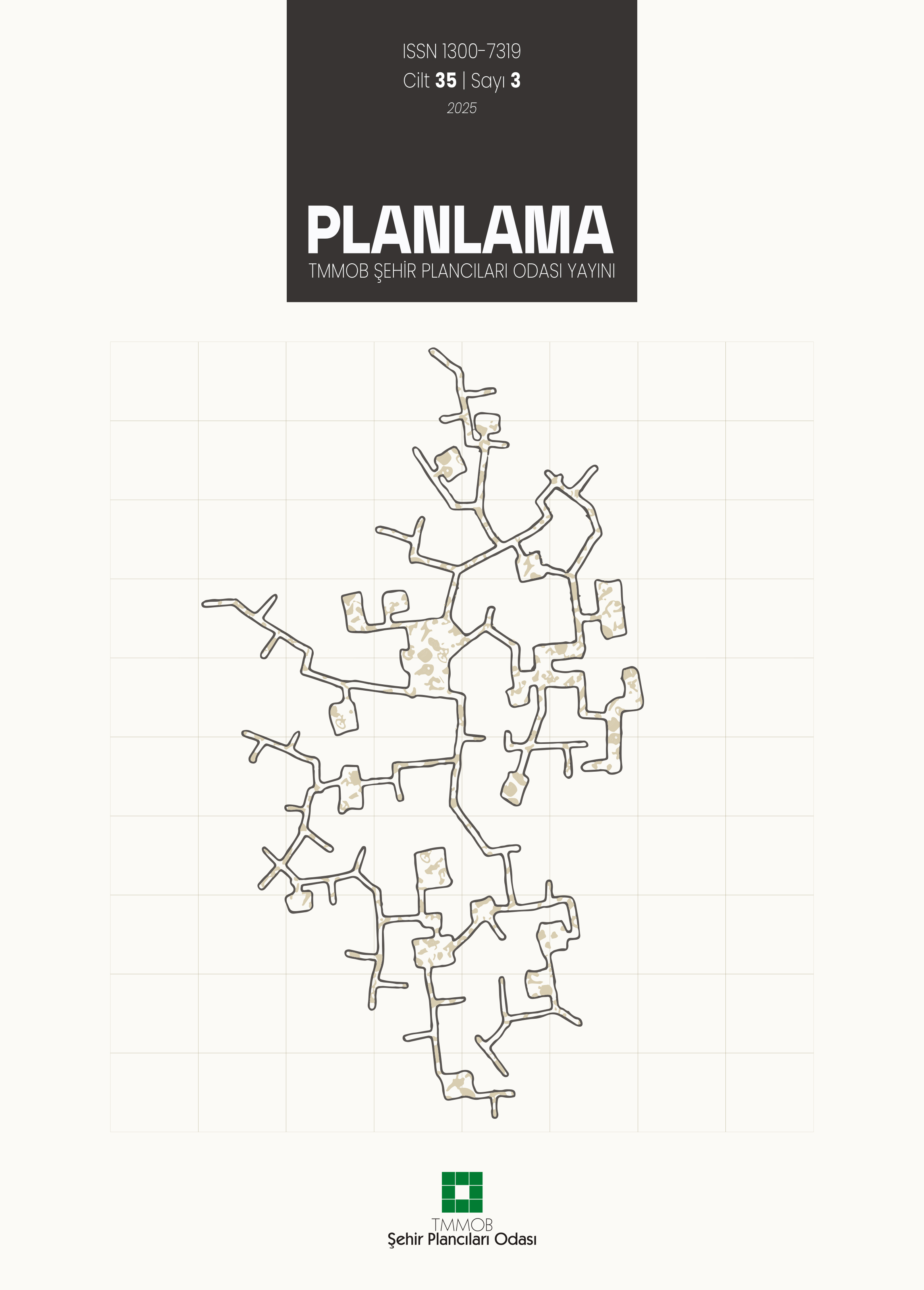Türkiye'de Kentsel Dönüşümün Yasalar ve Aktörler Üzerinden Dönemsel Olarak Değerlendirilmesi
Fidan YolcuBağımsız Araştırmacı, ZonguldakTürkiye'de 1950'li yıllardan 1980'li yıllara kadar kırdan kente göç ile birlikte kentlerin nüfusunda hızlı bir artış gözlenmiştir. Hızlı göçün etkisiyle birlikte kentlerde imara aykırı ve plansız gecekonduların inşası çarpık bir kentleşmenin ortaya çıkışında etkili olmuştur. İmar mevzuatına aykırı olan bu yapılar 775 sayılı gecekondu yasasıyla meşrulaştırılmış ve buna paralel olarak gecekondu yapımı her geçen gün artış göstermiştir. Bu yasayı izleyen süreçte 1980'li yıllarda imar afları ve ıslah imar planları ile gecekonduların apartman biçiminde yapılanmalarına izin verilmiştir. Gecekonduların fiziksel ve çevresel yönden eskimesi ve meşrulaştırma süreçleri kentsel dönüşüme konu olan uygulamaları gündeme getirmiştir. 1980'li yılların sonunda ilk kentsel dönüşüm uygulamaları Ankara'da Dikmen Vadisi ve Portakal Çiçeği Vadisinde uygulanmaya başlamıştır. 2000'li yıllara gelindiğinde ise Türkiye'de kentsel dönüşüm farklı tipleriyle yasalarda yer almış ve yaygın bir biçimde uygulanmaya başlamıştır. Bu makalede, Türkiye'de kentsel dönüşümün gelişimi kronolojik bir biçimde dönemsel olarak değerlendirilmiştir. Her bir dönem Türkiye'nin sosyal, ekonomik ve siyasal bağlamı ile kentleşme süreci ilişkilendirilerek ele alınmıştır. Çalışmada 2000'li yıllarda ardı ardına çıkan kentsel dönüşüme ilişkin yasaların belirmesi açısından önem taşımaktadır. Her bir yasa, kapsamı, hedefi, yetki tanımı, yetkiye sahip olan aktörler, hak tanımı ve çıktılar yönünde ele alınmıştır.
Anahtar Kelimeler: Aktör, gecekondu; kentsel dönüşüm; kentleşme; yasa.Periodical Evaluation of Urban Transformation in Turkey Via Laws and Actors
Fidan YolcuIndependent Researcher, Zonguldak,TurkeyA fast, increase in urban population has been observed in Turkey from the 1950s to the 1980s through migration from rural areas to cites. The construction of slums, that are against the legislation and unplanned, has been evident in arising of irregular urbanization through the effect of fast migration. These buildings as not compatible with reconstruction legislation have been le-gitimized by the Law.775 and paralelly, construction of slums have increased incrementally. Within the following period in the re-construction of slums in the from of aparment buildings has been allowed through reconstruction amnesties and improvement re-construction plans. The pyhsical and environmentally aging slum as well as their legitimization have put the practices subject to urban transformation to the agenda. By he end of 1980s, the first urban transformation applications have taken place in Dikmen and Portakal Çiçeği Valleys. In the 2000s, urban transformation in Turkey have become subject to laws with its diverse types and have started to be widely practiced. In this paper, the development of urban transformation in Turkey has been evaluated cronologically and periodically. Each period has been taken into consideration in relation with Turkey's social, economic and political context and urbanization process. The 2000s is specific in the study due to the emergence of several laws considering urban transformation. Each law has been reviewed via its context, goal, definition of authority, actors, with authority, definition of night and outcomes.
Keywords: Actor, slum, urban transformation; slum; urbanization; law.Makale Dili: Türkçe














